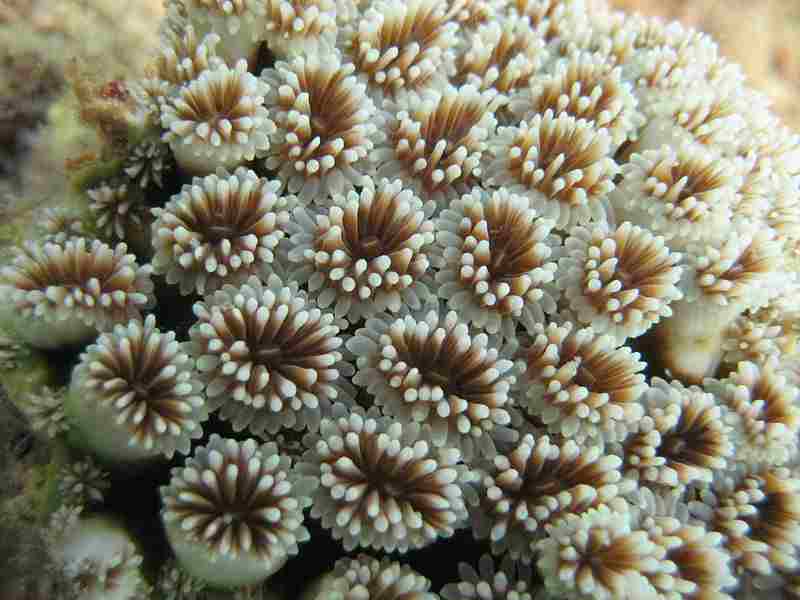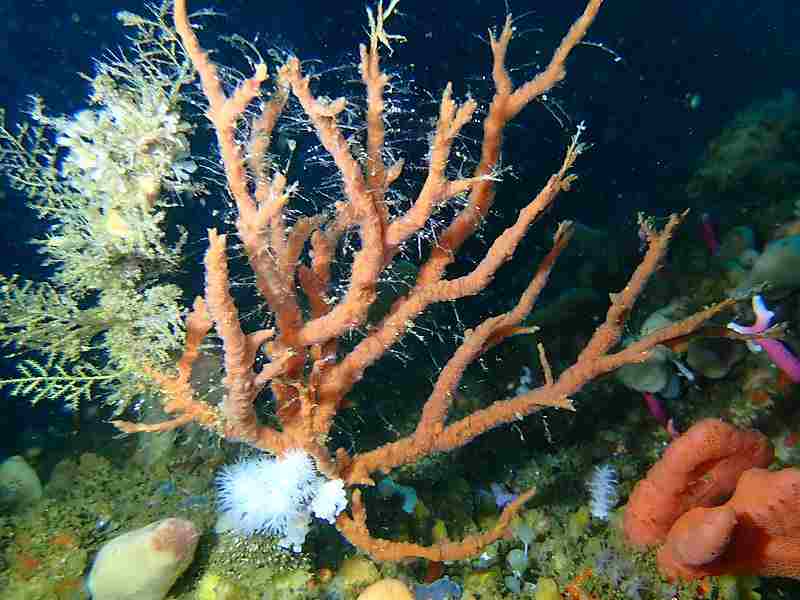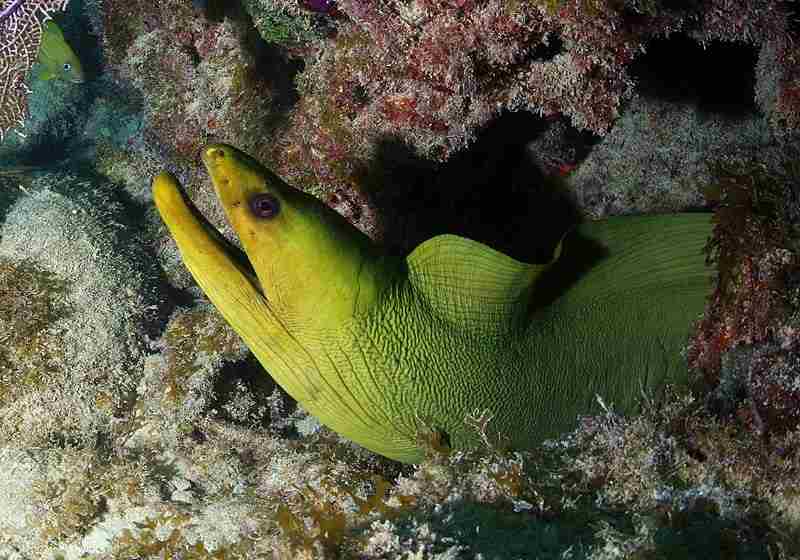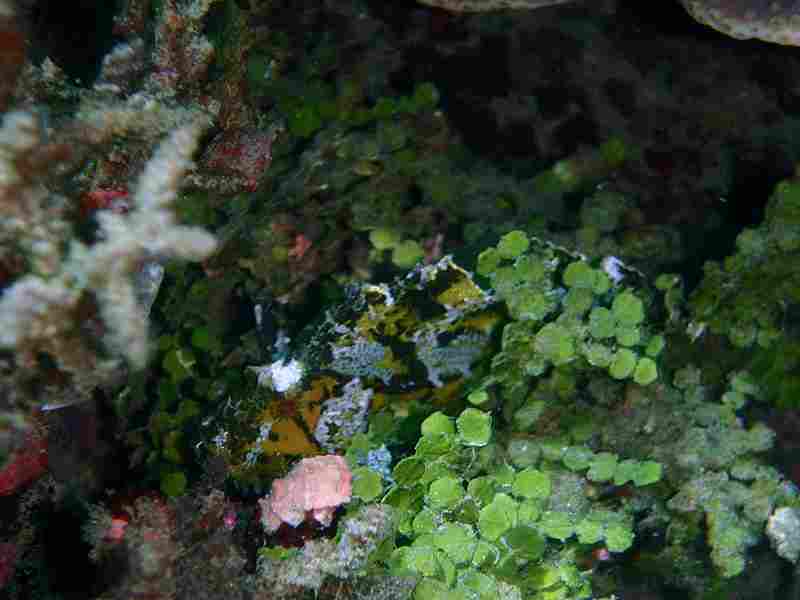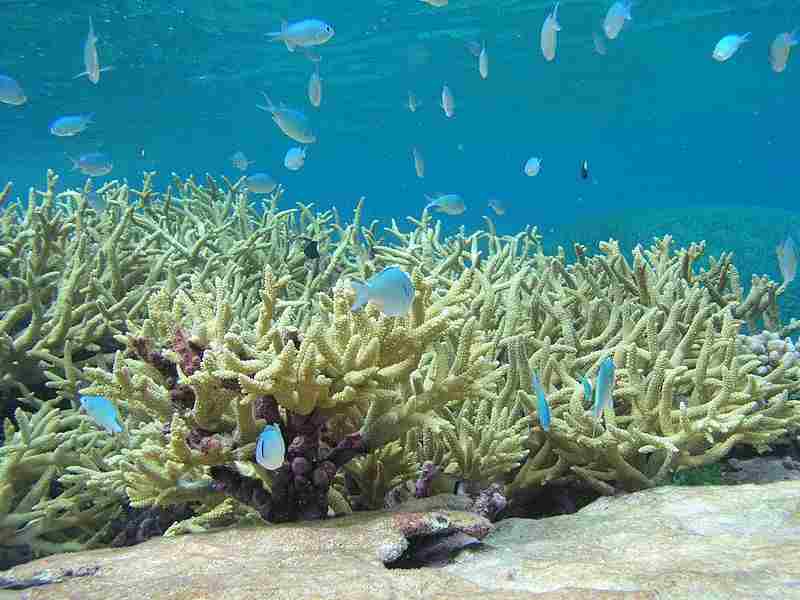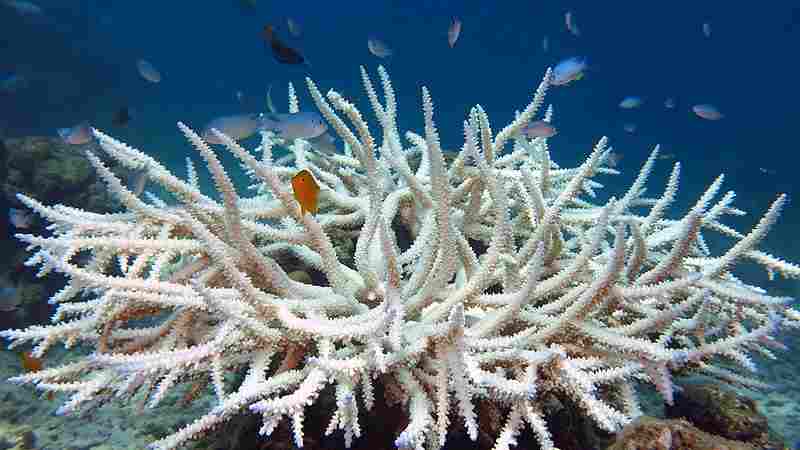15 Threats to Coral Reefs and Human Impacts Discussed
Threats to coral reefs are; sea level alteration, unsustainable fishing, unfavorable salinity change, ocean pollution, excessive sedimentation, unsustainable coastal development, invasive species, disease outbreaks, increasing sea surface temperature, and physical damage from marine vessels or debris.
Human impact on coral reefs are; marine resource depletion, pollution of water masses in reef zones, physical damage, coral mortality, and changes in chemical composition of ocean water around reefs.
This article discusses the threats to coral reefs as well as human impacts on coral reefs, as follows;
-How Human Waste Affects Coral Reefs
-Damage Caused By Humans to the Great Barrier Reef
-How Overfishing Affects Coral Reefs
-Threats to Coral Reefs
1). Sea Level Alteration: One of the Threats to Coral Reefs
Sea level alteration, particularly in the form of sea level rise, poses a significant and multifaceted threat to coral reefs around the world. This section provides an overview of how the phenomenon of sea level change impacts coral reefs.
Coral reefs are affected by sea level changes in various ways/through various mechanisms, which include; direct physical damage, reduced light penetration, coral bleaching, saltwater intrusion, erosion and sedimentation, habitat reduction, and ocean acidification.
Rising sea levels can lead to the direct physical damage of coral reefs. As sea levels increase, wave energy and water depth also rise, causing more frequent and severe physical damage to the reefs. This can lead to the breakage and fragmentation of coral colonies.
Higher sea levels can result in increased water turbidity, which reduced the amount of light that reaches the reefs. Corals depend on photosynthetic algae called zooxanthellae for energy, and lower light levels can hinder their ability to photosynthesize. This reduction in photosynthesis can weaken the corals and make them more susceptible to stressors like coral bleaching.

Elevated sea temperatures, which are often associated with climate change, can cause coral bleaching. Sea level rise exacerbates this problem by limiting the ability of coral reefs to recover from bleaching events. As sea levels rise, corals may not have enough time to regain their vitality and resilience before the next bleaching event occurs.
Rising sea levels can lead to saltwater intrusion into coastal aquifers. This can increase the salinity of groundwater, which, in turn, can negatively affect the quality of freshwater that feeds into coastal ecosystems. High salinity can stress and harm the coral reefs, particularly in nearshore areas.
Sea level rise can lead to increased erosion of coastal areas, which, in turn, can contribute to sedimentation on nearby reefs. Sedimentation can smother coral polyps, inhibiting their growth and reducing the overall health of the reef.
Rising sea levels can lead to the loss of habitat for many reef-associated species. As the sea encroaches further inland, terrestrial vegetation and shoreline habitats are lost. This can result in a reduction in the availability of certain species that depend on these habitats for their life cycles.
While not a direct effect of sea level rise, ocean acidification is related to the increased levels of atmospheric carbon dioxide that drive climate change and sea level rise. Ocean acidification can negatively impact coral reefs by reducing the availability of carbonate ions necessary for coral calcification.
In response to sea level rise, some coastal areas may undergo increased development and modification, which can foster pollution and other stressors that affect coral reef ecosystems. This can include increased sediment runoff, nutrient pollution, and habitat degradation.
Generally, sea level alteration, particularly sea level rise driven by climate change, poses a substantial and multifaceted threat to coral reefs. The combination of direct physical damage, reduced light penetration, saltwater intrusion, erosion, and other stressors can weaken these ecosystems, making them more vulnerable to the impacts of climate change and other human activities. Protecting and preserving coral reefs will require global efforts to mitigate climate change and reduce greenhouse gas emissions, as well as local measures to reduce stressors like pollution and overfishing.
2). Unsustainable Fishing
Unsustainable fishing practices represent another factor which poses a significant and immediate threat to coral reefs, which are among the most diverse and valuable ecosystems on the planet. Below is a discussion of how unsustainable fishing impacts coral reefs;
Some terms and concepts that are useful when discussing the impact of unsustainable fishing on coral reefs are; overfishing, destructive fishing practices, bycatch, habitat damage, possible introduction of invasive species, reduced resilience, economic decline, possible food insecurity, and global repercussions.
Overfishing occurs when fish stocks are harvested. consumed and depleted at a rate that exceeds their ability to naturally replenish. Many species of fish on and around coral reefs are targeted by both commercial and artisanal fisheries of varying scales. Overfishing disrupts the delicate equilibrium of the reef ecosystem by removing key species, which can lead to cascading effects throughout the coral reef food web. Predatory fish that control herbivorous species, for example, can become scarce, leading to the overgrowth of algae that can cover and suffocate corals.
Some fishing methods employed in or near coral reefs are highly destructive. These include methods like blast fishing, which involves detonating explosives to stun or kill fish, and cyanide fishing, which uses cyanide solutions to capture live fish for the aquarium trade. These practices not only kill fish but also destroy coral and other reef organisms. This not only reduces fish populations but also directly damages the physical structure of the reef.
Bycatch refers to the unintentional capture of non-target species in fishing operations. In coral reef environments, bycatch can be particularly problematic because it often includes non-target species such as juvenile fish, coral species, and other marine organisms. Bycatch can lead to the depletion of these species and disrupt the overall ecosystem.
Some fishing techniques, such as bottom trawling, can physically damage the seafloor and coral reefs. The gear used in bottom trawling scrapes the seafloor, destroying coral colonies, seagrass beds, and other critical habitats for marine life. This type of habitat damage can have long-lasting ecological consequences.
Some fishing-related activities, like the release of ballast water from ships or the discarding of live seafood species, can lead to the introduction of invasive species into coral reef environments. Invasive species can compete intensely against native species for essential resources, disrupt the balance of the ecosystem, and even damage coral directly.
Coral reefs naturally face various stressors, including coral bleaching and disease. Unsustainable fishing reduces the resilience of these ecosystems to cope with these stressors. For example, overfished reefs may be less resilient to the impacts of coral bleaching, making it more difficult for them to recover.
Unsustainable fishing practices can have significant economic and food security consequences for local communities that depend on coral reef resources. Overfishing and habitat destruction can deplete the fish stocks that people rely on for food and livelihoods.
Coral reefs provide valuable ecosystem services, including tourism, coastal protection, and biodiversity maintenance. Their degradation due to unsustainable fishing practices not only affects local communities but also has global implications.
Viable efforts to protect coral reefs from the threats of unsustainable fishing include the establishment of marine protected areas, implementing and enforcing fishing regulations, promoting sustainable fishing practices, and raising awareness about the importance of these ecosystems. These actions are essential to conserve the biodiversity and resilience of coral reefs for future generations.
3). Unfavorable Salinity Change: One of the Threats to Coral Reefs
Unfavorable salinity change is one of the abiotic stressors that can significantly threaten the instantaneous health, and long-term sustainability, of coral reefs. Here, an elaborate outline addressing how changes in salinity levels can impact coral reefs, is provided.
Some phenomena that can be used to highlight the link between salinity changes and coral reefs are; salinity sensitivity, increased stress on polyps, impact on symbiotic algae, reduced coral resilience, altered reproductive trend, habitat disruption, and species displacement; each of which may be observe at local and global scales.
Coral reefs are adapted to relatively stable salinity conditions, and they are sensitive to fluctuations in saltwater levels. Sudden or significant changes in salinity can stress coral reefs. This can occur due to various factors, including heavy rainfall, which abruptly and significantly dilutes seawater masses with freshwater, and evaporation, which can increase salinity.
Sudden increases in salinity due to reduced freshwater influx can cause dehydration stress for coral organisms. In contrast, a sudden decrease in salinity due to heavy rainfall or river runoff can result in osmotic stress as corals struggle to regulate their internal salt concentrations.
Corals have a mutualistic relationship with photosynthetic algae called zooxanthellae, which provide corals with energy. Unfavorable changes in salinity can disrupt this relationship. High salinity can lead to the expulsion of zooxanthellae; a process that is at the core of coral bleaching, which weakens the corals. Low salinity can also affect the symbiotic algae's photosynthetic ability, thereby reducing the bioenergy supply to the corals.

Unfavorable salinity changes can reduce the resilience of coral reefs to other stressors, such as rising sea temperatures and ocean acidification. Weakened corals are less capable of withstanding these additional stressors, making them more susceptible to coral bleaching and disease.
Changes in salinity can affect the reproduction of coral species. Many corals release their eggs and sperm into the water for fertilization, and changes in salinity can disrupt this process. This, in turn, can lead to reduced coral recruitment and hinder the recovery of damaged reefs.
Unfavorable salinity changes can lead to habitat disruption. For example, corals in nearshore areas may be more affected by freshwater influx due to their proximity to river mouths. Such conditions can limit the distribution of certain coral species and impact the overall biodiversity of the reef.
Altered salinity levels can favor the dominance of certain species over others. Species adapted to a narrower salinity range may outcompete corals in areas with rapidly fluctuating salinity, potentially leading to shifts in the composition of reef ecosystems.
Unfavorable salinity changes can have both local and global implications. Locally, it can impact the health and functioning of specific coral reef ecosystems. Globally, as part of a broader climate change issue, changes in salinity are related to the melting of polar ice caps and altered ocean circulation patterns, which can affect salinity conditions in coral reef regions.
Some applicable measures for protecting coral reefs from the effects of unfavorable salinity changes include monitoring and early warning systems to predict and mitigate salinity fluctuations, preserving coastal wetlands and mangroves that act as buffers against freshwater runoff, and addressing the broader issue of climate change to reduce the drivers of salinity alteration. These actions are crucial to safeguard the resilience and long-term survival of coral reefs.
4). Ocean Pollution
Ocean pollution is a major threat to coral reefs, which are known to be both diverse and sensitive in nature. The discussion below shows how various forms of ocean pollution impact coral reefs;
Coral reefs can be affected by pollution in several ways or forms, which include chemical alteration, marine debris influx, oil spills, sedimentation, toxic infiltration, acidification, wastewater and sewage, and global warming. All these concepts are linked to pollution in coastal ecosystems (like reefs), as revealed in the following outline;
The discharge of chemicals into the ocean, including pesticides, fertilizers, and industrial pollutants, can have detrimental effects on coral reefs. These pollutants can be carried by runoff from coastal areas into the ocean, leading to increased nutrient levels in the water. Elevated nutrient levels can promote the growth of harmful algae, leading to overgrowth and smothering of coral colonies in a process known as eutrophication.
Marine debris, such as plastics, can directly damage coral reefs. Plastics can become entangled in coral structures, leading to plastic pollution that can cause physical damage to reefs while providing a substrate for harmful bacteria. Plastic waste can also release toxic chemicals when exposed to solar radiation, and can be ingested by marine organisms, potentially entering the coral reef food chain.
Oil spills, whether from shipping accidents or offshore drilling, can have catastrophic effects on coral reefs. Oil coats the surface of the water and can smother corals, preventing them from receiving adequate sunlight and oxygen. These hydrocarbons also contains toxic compounds that are harmful to marine life, including coral polyps.
Soil erosion and sedimentation, often traceable to deforestation and unregulated construction near coastlines, can result in the deposition of fine sediments onto coral reefs. Excessive sedimentation can block sunlight from reaching corals, reducing their ability to photosynthesize and grow. It can also damage the delicate coral polyps and their symbiotic algae.
Hazardous substances like heavy metals, pharmaceuticals, and industrial chemicals can enter the ocean through various pathways, including sewage discharge and runoff from industrial areas. These substances can harm coral reefs by affecting the health of coral organisms, disrupting their reproductive cycles, and interfering with the symbiotic relationships between corals and algae.
Ocean acidification, resulting from the absorption of excess atmospheric carbon dioxide (CO2), can reduce the availability of calcium carbonate, which is a vital building component for coral skeletons. As the ocean becomes more acidic, it becomes more difficult for corals to build and maintain their calcium carbonate structures. This weakens the coral's ability to withstand physical disturbances and recover from stressors like coral bleaching.
Discharge of untreated wastewater and sewage from coastal communities can introduce high levels of nutrients and bacteria into coral reef environments. Elevated nutrient levels can lead to eutrophication, while bacterial contamination can harm the health of coral organisms and increase the risk of disease outbreaks.
While not a direct form of ocean pollution, global warming and the associated increase in sea temperatures are driven by the accumulation of greenhouse gases in the atmosphere, primarily from human activities. Elevated sea temperatures can trigger coral bleaching events, which are often fatal to coral colonies. Additionally, ocean warming can disrupt the delicate balance of coral ecosystems.
Some strategies that can be implemented to mitigate ocean pollution and protect coral reefs include strict regulations on pollutant discharge, improved sewage treatment and waste management, and the development of marine protected areas. Raising awareness about the importance of coral reefs and the consequences of ocean pollution is also critical for their conservation and long-term survival.
5). Excessive Sedimentation: One of the Threats to Coral Reefs
Excessive sedimentation is another of several, notable threats to coral reefs on Earth, as it can disrupt the equilibrium of resources and processes of these sensitive ecosystems. This section provides a comprehensive overview of how excessive sedimentation can impact coral reefs.
Ways in which sedimentation can impact coral reefs include; reduced light penetration, physical damage, siltation, smothering, reproductive impacts, increased susceptibility to stressors, shifts in coral community composition, and loss of biodiversity.
Sediment particles in the water column can obstruct and/or scatter sunlight, reducing the amount of light energy that reaches the corals. As stated earlier, corals rely on photosynthetic algae called zooxanthellae for much of their energy, so that decreased light can hinder their ability to photosynthesize. This, in turn, can weaken the corals and can lead to reduced rate of growth and overall productivity.
The settling of sedimentary materials on coral colonies can cause physical damage. Corals have delicate structures, and the weight of sediment masses can break or crush the coral polyps. This damage weakens the coral, making it more susceptible to diseases and other stressors.
Fine sediments can settle on the surfaces of corals, affecting their feeding mechanisms. Corals use specialized tentacles (along with stinging cells called nematocysts) to capture plankton and organic particles from the water. When these tentacles become clogged with sediments, the corals may struggle to obtain sufficient food, further compromising their health.

In cases of extreme sedimentation, corals can become completely smothered. When sediment accumulates on the coral colony, it can block the flow of water and prevent the exchange of gases, nutrients, and waste products. This creates an inhospitable environment for the corals and their symbiotic algae.
Sedimentation can affect the reproductive processes of corals. It can interfere with the release of gametes (eggs and sperm) and the fertilization of coral eggs. This, in turn, can limit the recruitment of new coral colonies, hampering the recovery and resilience of the reef.
Corals already face various stressors, including ocean warming and ocean acidification. Excessive sedimentation weakens the corals, making them more vulnerable to these stressors. For example, weakened corals are more prone to coral bleaching, a phenomenon in which they expel their symbiotic algae and lose their vibrant colors.
Prolonged and severe sedimentation can lead to shifts in the composition of coral communities. Certain species of corals are more tolerant of sedimentation than others. As sediment-loving species thrive in these conditions, the overall diversity of the reef may decrease, impacting the reef's ecological balance.
Coral reefs are among the most biodiverse ecosystems on the planet, providing habitat and sustenance for a wide range of marine life. Excessive sedimentation can harm not only the corals but also the various species that depend on the reef for food and shelter.
Protecting coral reefs from excessive sedimentation is achievable through the application of measures to reduce coastal erosion, such as maintaining natural vegetation and mangroves that act as buffers, and implementing erosion control practices during construction.
Proper land use and waste management, as well as regulations on development near reef areas, are essential to mitigate the effects of sedimentation. Additionally, education and awareness programs can help promote responsible practices among coastal communities and industries.
6). Unsustainable Coastal Development
Unsustainable coastal development usually poses a significant threat to coral reefs, as it can lead to habitat destruction and deterioration. This section discusses how unsustainable coastal development impacts coral reefs.
Some issues that can be raised when analyzing the role played by coastal development in the degradation of coral reefs include; habitat destruction, sedimentation, chemical pollution, overfishing and overharvesting, boat traffic, invasive species, altered water flow, disease outbreak-facilitation, and sea level impacts.
Coastal development, including the construction of resorts, hotels, housing, and infrastructure, often results in the direct destruction of coral reef habitats. Land reclamation, dredging, and coastal engineering projects can physically remove or damage coral reefs and the surrounding ecosystems.
The construction of roads, water dams, buildings, and other infrastructure in nearby areas, can disturb soil and lead to increased sedimentation. Sediment runoff from construction sites can smother nearby coral reefs, reducing light penetration and hindering the ability of corals to photosynthesize.
Coastal development typically involves the use of chemicals such as fertilizers, pesticides, and concrete additives. Runoff from construction sites and wastewater discharge can introduce these pollutants into coastal waters, leading to nutrient enrichment and chemical contamination that can be harmful to corals.
With coastal development and urbanization often comes an influx of residents and tourists, increasing the demand for seafood. Overfishing and the harvesting of reef-associated species can alter the stability of coral reef ecosystems, reducing the populations of herbivorous fish that help to control algae growth and promote coral growth.
Development along coastlines often leads to increased boat traffic, which can have a direct detrimental impact on coral reefs. Anchoring and grounding of boats can damage corals, and the discharge of pollutants, such as oil and sewage, from vessels can harm the reef ecosystem.
Coastal development can introduce invasive species through shipping and tourism. These non-native species can outcompete or prey on native reef organisms, further disrupting the ecosystem.
Also, coastal development can alter the natural flow of water and dynamics of sediments along coastlines. Engineering structures like seawalls and breakwaters can disrupt the movement of sand and sediment, potentially causing localized erosion and affecting the distribution of these materials on the reef.
The movement of people and goods associated with coastal development can inadvertently introduce coral diseases to previously unaffected reefs. Once introduced, these diseases can rapidly spread through interconnected reefs.
Lastly, unsustainable coastal development often fails to account for the long-term impacts of rising sea levels associated with climate change. As sea levels rise, coastal areas may become more susceptible to erosion, and the infrastructure built in these areas may become increasingly vulnerable to storm surges and saltwater intrusion.
Efforts that can be made to mitigate the threats of unsustainable coastal development to coral reefs include; Integrated Coastal Zone Management (ICZM), marine areal protection, routine Environmental Impact Assessments (EIAs), encouragement/enforcement of sustainable tourism, and conservative community engagement.
Implementing ICZM practices can help balance the needs of development with the protection of coastal ecosystems.
Establishing and enforcing MPAs can create zones where fishing and development are regulated to protect coral reefs.
Conducting thorough EIAs before coastal development projects can help identify potential threats to coral reefs and inform decision-making.
Promoting responsible and sustainable tourism practices can reduce the negative impacts of tourism on coral reefs.
Involving local communities in the planning and management of coastal development can lead to more sustainable and reef-friendly practices.
In general, the preservation of coral reefs in the face of coastal development requires a comprehensive approach that balances economic development with the protection of these invaluable ecosystems.
7). Invasive Species: One of the Threats to Coral Reefs
Invasive species pose a significant threat to coral reefs, disrupting the ecological stability of these diverse habitats. Here, an overview of how invasive species impact coral reefs is provided.
Some mechanisms by which invasive species may threaten the wellbeing of coral reef ecosystems include; intense competition for resources, predation, algal overgrowth, disease transmission, habitat alteration, genetic contamination, and ecosystem disruption.
Invasive species, whether they are plants, animals, or microorganisms, often compete intensely with native species for essential resources such as space, light, and nutrients. This competition can lead to a decline in native species, including corals and all the organisms that rely on them.
Many invasive species may have no natural predators in their new environment, which allows their populations to grow unchecked, and can significantly impair the sequence of energy transfer and resource conservation in coral reef food chains. Some invasive species, like the predatory crown-of-thorns starfish, can directly consume coral polyps, leading to extensive coral destruction.
Some invasive macroalgae, such as the aggressive algae species Caulerpa, can quickly overgrow coral reefs. They produce a dense shade over corals, reducing their access to light and inhibiting photosynthesis. This can weaken the corals and make them more susceptible to other stressors like disease and bleaching.

Diseases can be introduced by invasive species, to coral reef ecosystems. For example, the red algae Delisea pulchra has been linked to some coral diseases. These diseases can cause rapid declines in coral health and may even foster widespread mortality.
Some invasive species, particularly burrowing organisms like the infamous Indo-Pacific lionfish, can modify reef habitats. These changes may impact the structure and functionality of the reef ecosystem.
Hybridization between invasive and native species can lead to genetic contamination. This can alter the genetic diversity of native species and potentially reduce their ability to adapt to changing environmental conditions.
Invasive species can disrupt the natural interactions and food webs within coral reef ecosystems. They may consume or outcompete native species that are critical in maintaining the productivity and stability of the ecosystem.
Applicable measures to mitigate the threat of invasive species to coral reefs include; Early Detection and Rapid Response (EDRR), biosecurity measures, control and eradication, education and outreach, regulation, and restoration efforts. The following set of guidelines reiterate these measures;
Identifying and addressing invasive species as soon as possible is critical to preventing their establishment and spread.
Implementing biosecurity measures to prevent the introduction of invasive species through ballast water, ship hull fouling, and aquarium trade can help protect coral reefs.
In some cases, it may be possible to control or eradicate invasive species, particularly when their populations are localized.
Raising awareness among communities, divers, and tourists about the risks associated with invasive species can help prevent their unintentional introduction and spread.
Enforcing regulations on the import and trade of potentially invasive species can reduce the risk of their introduction.
Restoring native species and habitats can help improve the resilience of coral reefs and reduce their vulnerability to invasive species.
Invasive species pose a complex and consistent threat to coral reefs, and addressing this challenge requires a combination of preventative measures, management strategies, and continued research in order to understand their impacts and control methods.
8). Disease Outbreaks
Disease outbreaks represent a significant and escalating threat to coral reefs. Coral diseases are emerging and spreading at an alarming rate, affecting the productivity and vitality of these critical ecosystems. Below is an elaborate overview of how disease outbreaks impact coral reefs;
Disease outbreaks affect coral reefs because they are built up by corals, which are living organisms. Some factors and terms that are usually mentioned when discussing the concept of disease outbreaks in coral reef ecosystems, are; pathogens, disease vectors, stress-induced vulnerability, bleaching, disease synergy, grazers, disease transmission trends, coral mortality, and ecosystem disruption.
Corals are living animals that can become susceptible to diseases just like any other organism. When corals become infected, their health and ability to reproduce can be severely compromised.
Coral diseases are caused by various pathogens, including bacteria, viruses, and fungi. Some diseases are spread by vectors, such as snails, marine worms or fish, which carry the pathogens from one coral to another.
Environmental stressors, including rising sea temperatures, pollution, and excessive sedimentation, can weaken coral defenses and make them more vulnerable to disease. Such stressors, especially elevated sea temperatures, can trigger mass coral bleaching events, which leave corals more susceptible to the activities of pathogens.
Coral bleaching, often caused by rising sea temperatures, can sometimes create ideal conditions for the rapid proliferation of certain pathogens. The combination of bleaching and disease can lead to extensive coral mortality.
Overfishing of herbivorous and omnivorous grazers, such as parrotfish and sea urchins, can result in increased macroalgae cover on reefs. These macroalgae can harbor/support disease vectors and pathogens, leading to disease transmission to corals.
Some diseases are transmitted directly from coral to coral, while others require intermediate hosts. Infected corals can release disease agents into the water, potentially infecting neighboring corals or being carried to distant reefs by ocean currents.
Disease outbreaks can lead to coral mortality, with entire colonies or even reef sections being lost. This not only affects the corals themselves but also the myriad species that rely on the reef for habitat and sustenance.
The loss of corals due to disease can disrupt the ecological balance of the reef. Many reef organisms, including fish, invertebrates, and algae, depend on healthy coral habitats. When corals are lost, the entire ecosystem can suffer.
Some viable efforts to mitigate the threat of disease outbreaks to coral reefs are; monitoring, early detection, research and disease resilience-building, reduction of stressors, coral restoration, establishment of Marine Protected Areas (MPAs), education and advocacy. Additional detail is given below;
Regular monitoring of coral health can help in the early detection of disease outbreaks. Rapid response measures can be implemented to contain the spread of diseases.
Understanding the causes and mechanisms of coral diseases is essential for developing strategies to increase coral resilience. This includes identifying factors that may make some coral species more resistant to diseases.
Addressing the underlying stressors that weaken coral defenses, such as reducing pollution and implementing coral-friendly fishing practices, can help protect reefs from disease outbreaks.
Restoring damaged coral populations can aid in the recovery of disease-affected reefs. Coral gardening and transplantation efforts have been used to rebuild degraded areas.
The establishment of well-managed MPAs can offer some protection against disease outbreaks by reducing stressors and allowing coral populations to recover.
Increasing public awareness of the threats to coral reefs, including disease outbreaks, can promote conservation efforts and reduce human impacts.
Addressing the threat of disease outbreaks to coral reefs requires a multidimensional and flexible approach, which includes both local and global conservation efforts to reduce stressors and enhance the resilience of these coastal ecosystems.
9). Increasing Sea Surface Temperature: One of the Threats to Coral Reefs
Increasing sea surface temperature is another critical threat to coral reefs, which is driven mainly by global climate change. This section overviews how rising sea temperatures adversely affect coral reefs.
Several concepts already mentioned in this article, highlight the impact of rising sea surface temperatures, on coral reefs. These include; coral bleaching, loss of symbiotic algae, reduced growth and reproduction, increased frequency and severity of bleaching hazards, loss of coastal protection, as well as economic and social consequences.
The most direct and visible impact of rising sea temperatures on coral reefs is arguably coral bleaching. Corals are sensitive to temperature changes, and when the water gets too warm, they expel the symbiotic algae called zooxanthellae that live within their tissues. These algae provide corals with their vibrant colors and a significant portion of their bioenergy through photosynthesis. When they are expelled, the corals turn white or become "bleached."
Coral bleaching not only results in the loss of color but also deprives corals of their primary food source and energy supply. In the absence of symbiotic algae, corals become stressed and are more susceptible to disease and mortality.
Prolonged exposure to elevated temperatures can hinder coral growth and reproduction. Corals that have experienced bleaching events may take years to recover, and some may never fully regain their former productivity.
Climate change is causing more frequent and severe coral bleaching events. As sea surface temperatures continue to rise, coral reefs have less time to recover between these stress events. This makes it increasingly challenging for corals to adapt and survive.
Coral reefs are highly biodiverse ecosystems with high species richness that support a multitude of species, several of which rely on corals for food and refuge. When corals are stressed and die, the entire reef ecosystem suffers. Fish populations decline, and the availability of habitats for various marine organisms is reduced.
Healthy coral reefs often function as natural barriers that protect coastlines from the full impact of storms and erosion. As corals decline due to bleaching, the coastal communities that depend on these reefs for protection become more vulnerable to the impacts of tropical storms and rising sea levels.
Coral reefs are vital for tourism and fisheries, providing livelihoods and food security for many communities. The loss of reefs due to bleaching can have severe economic and societal consequences.
Mitigating the threat of increasing sea surface temperature to coral reefs can be achieved by a combination of various means which include; mitigating climate change, areal protection of marine ecosystems, coral restoration projects, conservation and sustainable fishing, public awareness and education. The outline of actionable steps is given as follows;
Reducing greenhouse gas emissions is essential to slow down global warming. International agreements and local actions to reduce carbon emissions are critical in addressing the root cause of rising sea temperatures.
Establishing well-managed MPAs can help protect coral reefs from additional stressors, allowing for some recovery and resilience.
Coral gardening and transplantation efforts aim to restore damaged coral populations, although they cannot fully replace the ecological complexity of natural reefs.
Implementing sustainable fishing practices and reducing pollution in and around coral reef areas can help to reduce stress on these ecosystems, and make them more resilient to temperature-related stress.
Increasing public understanding of the importance of coral reefs and the threats they face is vital for fostering support for conservation and responsible environmental practices.
Generally, addressing the threat of increasing sea surface temperature to coral reefs requires a global commitment to reducing climate change, as well as local efforts to protect and restore these ecosystems.
10). Physical Damage from Marine Vessels or Debris
Coral reefs are susceptible to various threats, and one of them is physical damage from marine vessels or debris. Here, an overview is given which addresses how such activities pose a threat to coral reefs.
Some important themes with regards to physical damage from marine vessels or debris to coral reefs, are; anchoring and groundings, propeller scarring, marine debris, dredging, coastal development, boat traffic, tourism, and the fragility of corals.
Marine vessels, particularly large ships and boats, can anchor or run aground on coral reefs. The weight and movement of these vessels can crush and break coral colonies, causing immediate and often irreversible damage. Grounding incidents can lead to extensive scars on the reef structure.
The propellers of boats and ships can cause significant damage to coral reefs. The turbulence generated by propellers can dislodge or break coral colonies and disturb the delicate structure of the reef.
Debris such as discarded fishing gear, plastics, and other materials can accumulate on coral reefs. When these materials come into contact with the corals, they can physically damage or smother them, impeding their growth and survival.
Dredging activities, often associated with coastal development and port expansion, can introduce sediments and debris into reef environments, which, along with machinery, can physically impair or injure corals. The removal of sand and other materials can disrupt the delicate balance of the reef, affecting water clarity and increasing sedimentation on corals.

High volumes of boat traffic, especially in popular tourist areas, can lead to continuous physical stress on coral reefs. Even small boats and snorkelers can accidentally damage corals through contact or dropping anchors in sensitive areas.
Coral reefs are highly sensitive to physical disturbances. The calcium carbonate structures of coral colonies are fragile, and even minor impacts can lead to coral breakage and mortality.
The consequences of physical damage to coral reefs include; coral fragmentation, weakened ecological resilience, and habitat loss.
Physical damage often results in the fragmentation of coral colonies. These broken pieces have a reduced chance of survival and may not be able to regenerate into healthy corals.
Repeated physical damage weakens the resilience of coral reefs, making them more vulnerable to other stressors like disease and climate change.
Damaged coral colonies reduce the availability of suitable habitat for various marine species. This loss of habitat can have cascading effects on the entire ecosystem.
Efforts to mitigate the threat of physical damage from marine vessels or debris to coral reefs include; areal delineation and protection, safe navigation practices, installation of mooring buoys, waste management, sustainable coastal development, and public education. They are individually mentioned below;
Designating and enforcing marine protected areas with restricted or no-anchoring zones can help to protect vulnerable reef areas.
Promoting safe navigation practices, such as using navigational charts and GPS technology, can help prevent accidental groundings and collisions with coral reefs.
Installing mooring buoys in popular anchoring areas allows vessels to secure themselves without dropping anchors onto fragile coral reefs.
Implementing effective waste management practices and raising awareness about marine debris can reduce the presence of harmful debris on and around coral reefs.
Ensuring that coastal development projects are carried out with minimal impact on coral reef ecosystems and their surroundings.
Educating the public, including tourists and local communities, about the importance of coral reefs and the need to protect them from physical damage.
Preventing physical damage to coral reefs is essential for their long-term survival, as these ecosystems play a critical role in supporting marine biodiversity, coastal protection, and the livelihoods of millions of people worldwide.
-Human Impact On Coral Reefs
1). Resource Depletion: A Human Impact On Coral Reefs
Human activities can cause resource depletion in coral reefs. This section provides a concise overview of how this depletion occurs;
Mechanisms behind human-induced resource depletion in coral reefs are; overfishing, destructive fishing practices, coral collection, and unsustainable tourism.
Excessive fishing, especially of herbivorous fish that control algae growth, disrupts the natural balance and can lead to reduced coral health.
Techniques like blast fishing and cyanide fishing not only target valuable species but also harm the coral habitat, causing resource depletion.
The aquarium trade and souvenir collectors can deplete coral populations, affecting both coral health and ecosystem biodiversity.
High-impact tourism activities, such as trampling, anchoring, and chemical sunscreen use, can degrade coral reefs and deplete their resources.
Generally, human-induced resource depletion in coral reefs, through overfishing, destructive practices, coral collection, and unsustainable tourism, poses a significant threat to these ecosystems. Sustainable management and conservation measures are important to prevent further depletion and protect coral reefs.
2). Water Pollution in Reef Zones
Human activities can lead to water pollution in reef zones, which directly impacts coral reefs. A concise overview of how this pollution occurs would include concepts like runoff pollution, chemical contamination, marine debris influx, and coral stress.
Agricultural runoff, sewage discharge, and urban runoff can introduce excess nutrients, sediments, and pollutants into coastal waters, degrading water quality.
Chemical pollutants, including pesticides, herbicides, and petroleum products, can directly harm coral reefs and disrupt the delicate balance of the ecosystem.
Plastics and debris from human activities can accumulate in reef zones, causing physical damage to corals and introducing toxins into the water.
Water pollution can stress corals and reduce their ability to withstand other environmental stressors, making them more susceptible to diseases and bleaching.
As shown in the above outline, human-induced water pollution in reef zones, through runoff, chemical contamination, marine debris, and coral stress, poses a significant threat to the health and resilience of coral reefs. Effective pollution prevention and control measures are essential for reef conservation.
3). Physical Damage: A Human Impact On Coral Reefs
Human activities can cause physical damage to coral reefs. This can be discussed within contexts like anchor damage, dredging and construction, coral collecting, and recreational activity.
Anchoring boats and vessels on coral reefs can break and crush corals, disrupting their structure and altering their ecological roles.
Coastal development, dredging, and construction can result in sedimentation, which suffocates and stresses corals.
Collectors targeting corals for the aquarium trade or souvenirs can physically damage and remove coral colonies.
Snorkeling, diving, and careless tourism practices may lead to physical contact with corals, causing breakage and damage.

On the overall, human-induced physical damage to coral reefs, through anchor damage, dredging, collecting, and recreational activities, poses a significant threat to the health and integrity of these ecosystems. Sustainable practices and protective measures are necessary for coral reef conservation.
4). Human-Induced Coral Mortality in Reefs
Human activities can lead to coral mortality in reefs. A concise overview of how this occurs is discussed here, within various contexts that include bleaching, disease transmission, pollution, and physical damage.
Elevated sea temperatures due to climate change can induce coral bleaching, potentially leading to coral death if stress is prolonged.
Human contact, pollution, or improper waste disposal can facilitate the spread of diseases among coral colonies, causing mortality.
Excess nutrients, chemicals, and marine debris from human sources can degrade water quality and directly harm corals, leading to mortality.
Anchor damage, trampling, and destructive fishing practices can physically harm corals, resulting in their mortality.
As shown above, human-induced factors, including bleaching, disease transmission, pollution, and physical damage, can lead to coral mortality in reefs. Mitigation efforts and conservation actions are crucial to safeguard these vital ecosystems.
5). Changes in Ocean Water Chemistry Near Coral Reefs: A Human Impact On Coral Reefs
Human activities can alter the chemical composition of ocean water near coral reefs. How this occurs can be explained in term of ocean acidification, nutrient runoff, chemical pollution, and groundwater seepage, as outlined below;
Increased atmospheric carbon dioxide (CO2) levels lead to higher CO2 absorption by seawater, causing ocean acidification. This lowers the pH of the water and reduces the availability of carbonate ions, which are essential for coral skeleton formation.
Runoff from agricultural outlets, sewage, and urban areas can introduce excess nutrients like nitrogen and phosphorus into coastal waters. This nutrient enrichment can promote the overgrowth of algae, potentially smothering corals.
Industrial discharge, oil spills, and chemical pollutants can contaminate coral reef ecosystems, directly harming corals and interfering with their reproduction and growth.
Lastly, polluted groundwater seeping into coastal areas can carry contaminants such as heavy metals and toxins, affecting water quality and coral health.
In summary, human-induced changes in ocean water chemistry, through ocean acidification, nutrient runoff, chemical pollution, and groundwater seepage, can significantly impact the health and resilience of coral reefs. Addressing these issues is a critical step for coral reef conservation.
*How Human Waste Affects Coral Reefs
Waste materials produced by humans and their activities, particularly sewage, can have detrimental effects on coral reefs. Human waste affects coral reefs by fostering excessive influx/accumulation of nutrients, degradation of water quality, and waterborne spread of pathogens. These effects are elaborated briefly as follows;
Human sewage often contains high levels of nutrients like nitrogen and phosphorus. When this sewage is discharged into coastal waters, it can lead to nutrient enrichment, promoting the growth of algae and phytoplankton. Excessive algal growth can smother corals and block sunlight, hindering their photosynthesis.
The discharge of untreated sewage can rapidly reduce water quality by making it toxic, odorous, and reducing clarity. Poor water quality can stress and harm coral reefs, making them more susceptible to diseases and bleaching.
Human waste may contain pathogens and disease-causing microorganisms. These can be transmitted to corals, causing infections and diseases that can lead to coral mortality.
*Damage Caused By Humans to the Great Barrier Reef
The Great Barrier Reef, located off the coast of Queensland, Australia, has suffered damage from various human activities.
The damage which humans have caused to the Great Barrier Reef through their activities include coral bleaching, overpopulation of crown-of-thorns starfish, depletion of fish populations, pollution, and ecosystem modification through coastal development and dredging. This is elaborated below;
Rising sea temperatures due to climate change have caused coral bleaching events, which stress and kill corals. These bleaching events are primarily driven by the emission of greenhouse gases, a global human-induced issue.
An overpopulation of crown-of-thorns starfish, which can feed on coral polyps, has occurred due to increased nutrient runoff from agriculture and land development.
Urban and industrial development along the coast has led to increased sedimentation, pollution, and habitat destruction near the reef.
Destructive fishing practices, such as the use of trawls and explosives, have damaged coral reefs and depleted fish populations. Overfishing disrupts the delicate balance of the reef ecosystem.
The high volume of tourists visiting the Great Barrier Reef has led to physical damage from activities such as snorkeling and diving, as well as pollution from boats and infrastructure development.
Movement of ships in the region poses a risk of oil spills and physical damage to reefs due to anchor drops and grounding incidents.
Various efforts are being made to mitigate these impacts, such as implementing marine protected areas and sustainable tourism practices, to protect and conserve the Great Barrier Reef.
*How Overfishing Affects Coral Reefs
Overfishing, which can be described as the excessive extraction of fish and other marine species from coral reef ecosystems, has significant and wide-ranging effects on these delicate environments.
Overfishing affects coral reef biodiversity, as well as instantaneous physical and chemical conditions, and long term variation patterns Below is a comprehensive discussion of how overfishing affects coral reefs in these dimensions;
Biodiversity Impact of Overfishing On Coral Reefs
Overfishing affects coral reefs by disrupting biotic mechanisms and processes; with effects such as predator-prey imbalance, shift in species composition, altered trophic interactions, and decreased functional diversity.
Overfishing often targets top predators like groupers and snappers. When these predators are depleted, the populations of herbivorous fish increase because they are no longer kept in check. This leads to overgrazing of algae on the reef, which can smother corals and inhibit their growth.
A shift in the composition of reef fish populations is very likely to result from overfishing. Species that are more resilient to fishing pressure may dominate, while more vulnerable species may decline or disappear. This can disrupt the balance and diversity of the reef ecosystem.
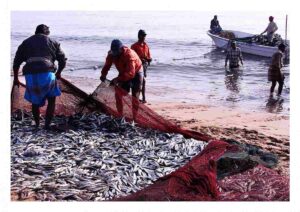
Overfishing disrupts the natural food web of coral reefs. As key predators (and prey) are removed, there can be cascading effects on the entire ecosystem, affecting not only fish but also autotrophs like algae, and even the corals.
Lastly, the removal of certain species through overfishing can lead to a decrease in functional diversity. This means that important ecological functions, such as herbivory or cleaning behavior, may be diminished, impacting the overall health of the reef.
Effects of Overfishing On Physical Conditions of Coral Reefs
Overfishing affects coral reefs by altering their physical conditions through algae overgrowth, increased disease vulnerability, reduced resilience, and direct mechanical damage.
Excessive harvesting of herbivorous fish, which graze on algae, can lead to an increase in algal abundance on coral reefs. This can result in the overgrowth of algae on corals, competing for space and resources and potentially smothering corals.
When herbivorous fish populations decline due to overfishing, corals become more susceptible to diseases. Algae overgrowth can create physical stress on corals, making them more vulnerable to pathogens.
Overfishing can reduce the resilience of coral reefs. Without herbivores to control algae, corals face greater competition and may struggle to recover from disturbances like severe storms or bleaching events.
Effects of Overfishing On The Chemical Conditions of Coral Reefs
Also, overfishing can affect coral reefs by altering their chemical constitution and processes, through mechanism such as; alteration of nutrient cycling trends, changes in coral calcification, and increased rate of ocean acidification.
Overfishing can disrupt nutrient cycling in coral reef ecosystems. Fish play a crucial role in recycling nutrients within the reef. Their absence can result in nutrient-concentration imbalances, which can affect the growth and health of corals.
Overfishing can indirectly affect the chemical conditions of coral reefs by influencing the growth and health of corals. Reduced herbivory can lead to more sedimentation and algal cover, which can inhibit coral calcification, as they require clean, well-lit conditions for optimal growth.
While not directly caused by overfishing, the increased atmospheric CO2 levels associated with overfishing can contribute to ocean acidification, which has negative effects on coral calcification and reef health.
Management and Conservation of Coral Reefs Within the Context of Human Impacts
To mitigate the negative impacts of overfishing on coral reefs, various management and conservation strategies can be implemented. These include delineation and protection of most vulnerable areas, sustainable fishing practices, and community-based management. They are outlined as directives below;
Establishing no-take zones within MPAs can protect fish populations from overfishing, allowing them to recover and spill over into adjacent areas.
Implementing sustainable fishing practices, such as size and catch limits, can help maintain healthy fish populations while preventing overfishing.
Involving local communities in the management of their marine resources can lead to more effective conservation efforts and sustainable practices.
Addressing the broader issues of climate change and ocean acidification is essential to ensure the long-term health of coral reefs, as these factors exacerbate the impacts of overfishing.
Conclusion
Threats to coral reefs are;
Sea Level Alteration
Unsustainable Fishing
Unfavorable Salinity Change
Ocean Pollution
Excessive Sedimentation
Unsustainable Coastal Development
Invasive Species
Disease Outbreaks
Increasing Sea Surface Temperature
Physical Damage from Marine Vessels or Debris
Human impacts on coral reefs are;
Marine Resource Depletion
Pollution of Water Masses in Reef Zones
Physical Damage
Coral Mortality
Changes in Chemical Composition of Ocean water Around Reefs
